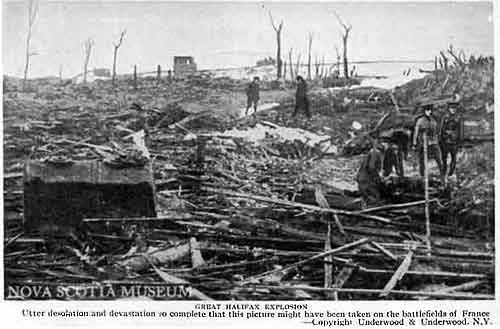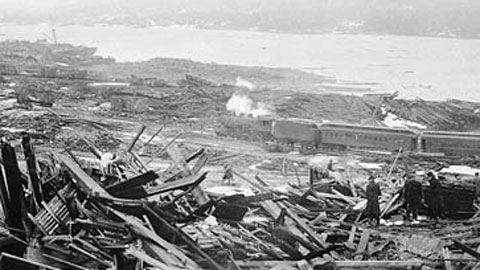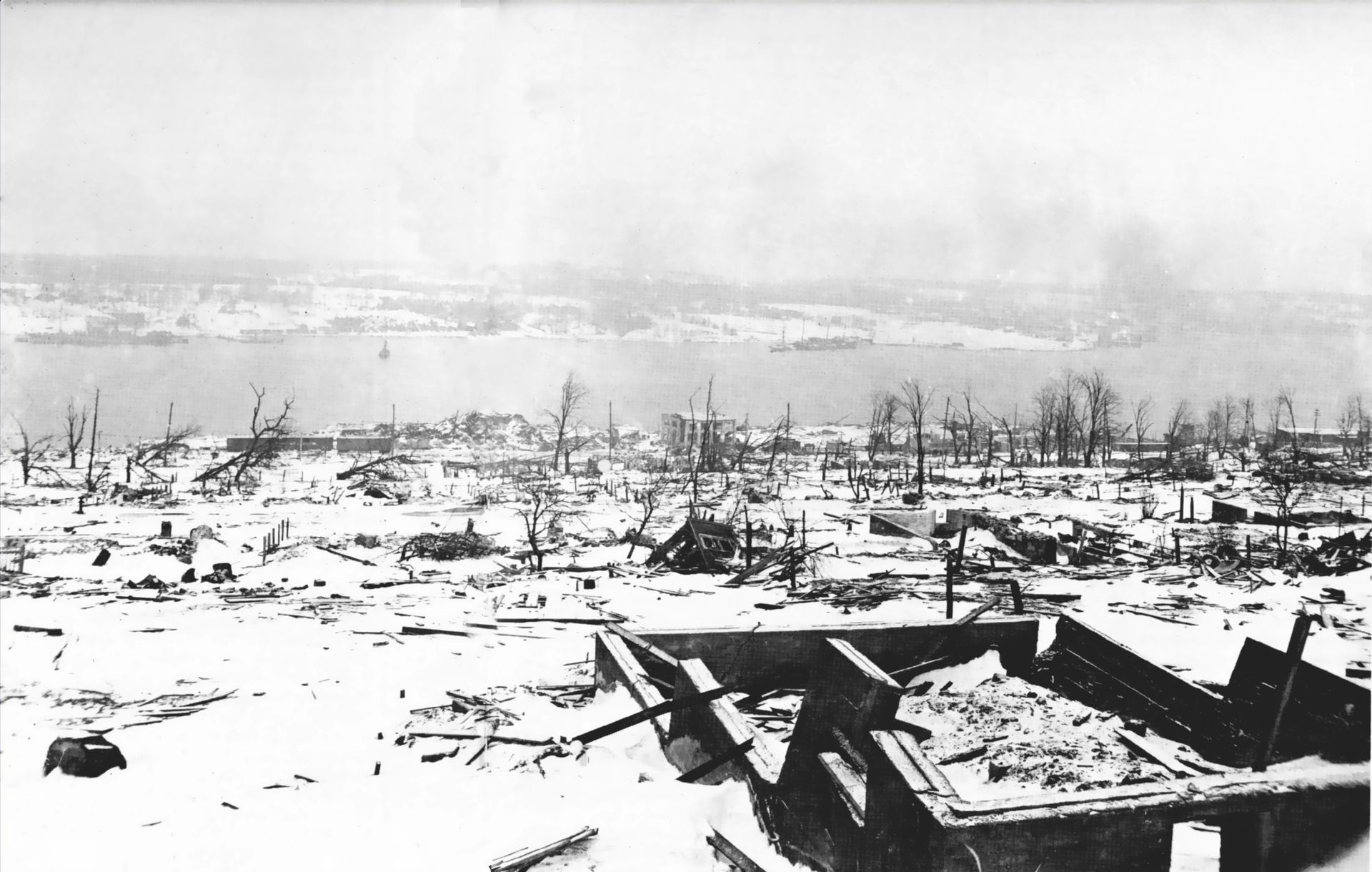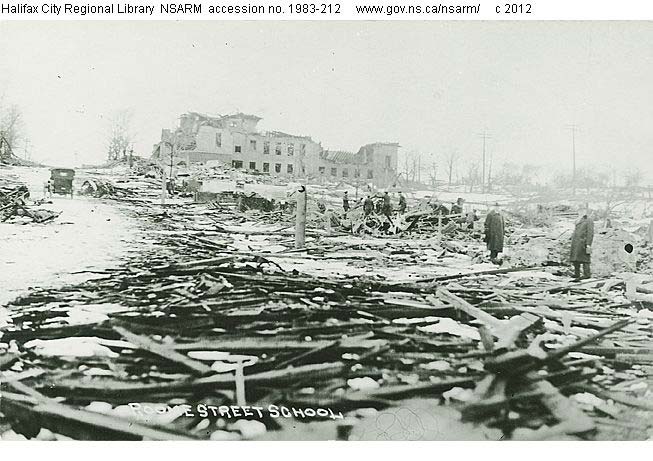Thousands Dead, Thousands More Injured
The Cargo? Ammunition, and Humanitarian Relief
Special to The Great War Project.
Editor’s note: Thanks to David Perry for bringing this to our attention.
(6 December) Thousands of miles away from the European battlefields, an unimaginable disaster hits Halifax, Nova Scotia, in Canada.
According to historian Martin Gilbert, “in the Canadian harbor of Halifax, a French merchant ship the Mont- Blanc loaded with munitions for Europe collided with a Norwegian vessel, the SS Imo and blew up.”
“More than 2000 people were killed and 9,000 injured,” an astounding one in five of the population of Halifax.

The aftermath of the Halifax explosion.
This against the backdrop of “a massive shipbuilding crusade” in the United States, “to provide the merchant shipping needed for the war in 1918,” Gilbert reports.
The convoy system is beginning to reap real benefits for the Allies. According to historian Gilbert, “November’s shipping losses were the lowest of the year, with 126 ships being sunk, 56 of them British.” Four American battleships joined the British Grand Fleet.
As for the Halifax explosion, a fire on board the French ship ignited her cargo, causing an explosion that devastated the Richmond district of Halifax.
The blast, according to historians, was the largest man-made explosion before the development of nuclear weapons, releasing the equivalent energy of roughly 2.9 kilotons of TNT.
According to an account in Wikipedia, the Mont-Blanc was under orders from the French government to carry her cargo of high explosives from New York via Halifax to Bordeaux, France. “At roughly 8:45 am, she collided at low speed, with the unladen Imo, chartered by the Commission for Relief in Belgium to pick up a cargo of food supplies in New York. The resulting fire on board the French ship quickly grew out of control. Approximately 20 minutes later, the Mont-Blanc exploded.
Halifax was devastated. Nearly all structures within a half-mile radius were obliterated. A pressure wave snapped trees, bent iron rails, demolished buildings, grounded vessels (including the Imo, which was washed ashore by the ensuing tsunami), and scattered fragments of the Mont-Blanc for miles. Hardly a window in the city proper survived the blast.
Across the harbor, there was also widespread damage. A tsunami created by the blast wiped out the community of the Mi’kmaq Indian Nation who had lived there for generations.
Hospitals quickly filled up. Rescue trains began arriving the day of the explosion from across Nova Scotia and New Brunswick, while other trains from central Canada and the northeastern United States were prevented by blizzards. Construction of temporary shelters to house the many people left homeless began soon after the disaster.
Adding to the chaos were fears of a potential second explosion. A cloud of steam shot out of ventilators at the ammunition magazine at Wellington Barracks as naval personnel extinguished a fire by the magazine. The fire was quickly put out; the cloud was seen from blocks away and quickly led to rumors that another explosion was imminent.
Uniformed officers ordered everyone away from the area. As the rumor spread across the city, many families fled their homes. The confusion hampered efforts for over two hours until fears were dispelled by about noon. Many rescuers ignored the evacuation, and naval rescue parties continued working uninterruptedly at the harbor.
The initial judicial inquiry found the Mont-Blanc to have been responsible for the disaster, but a later appeal determined that both vessels were to blame.
